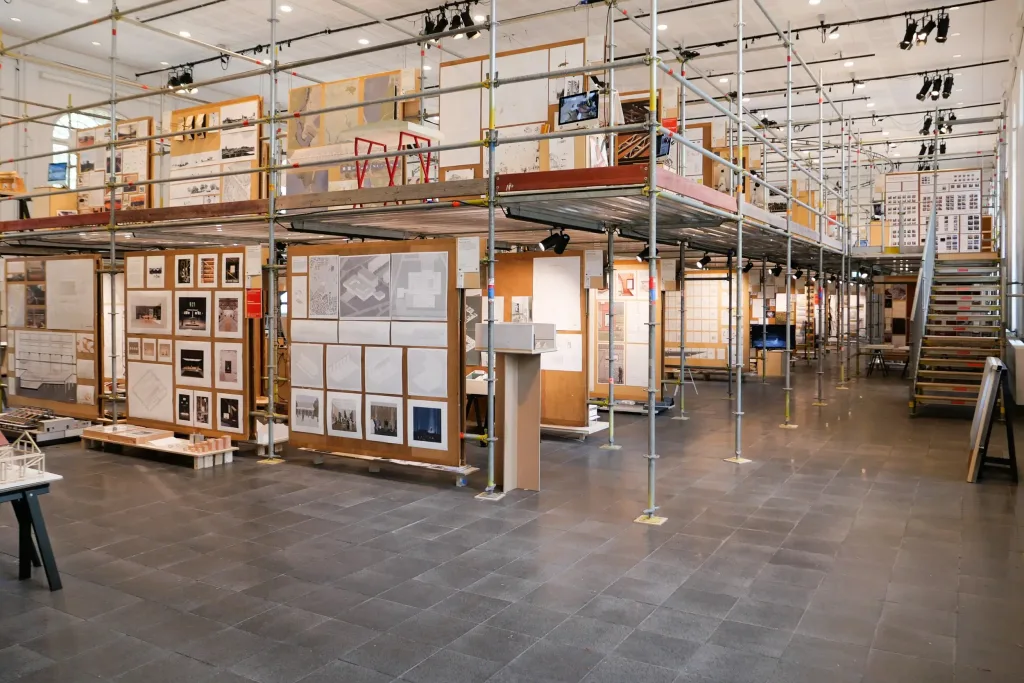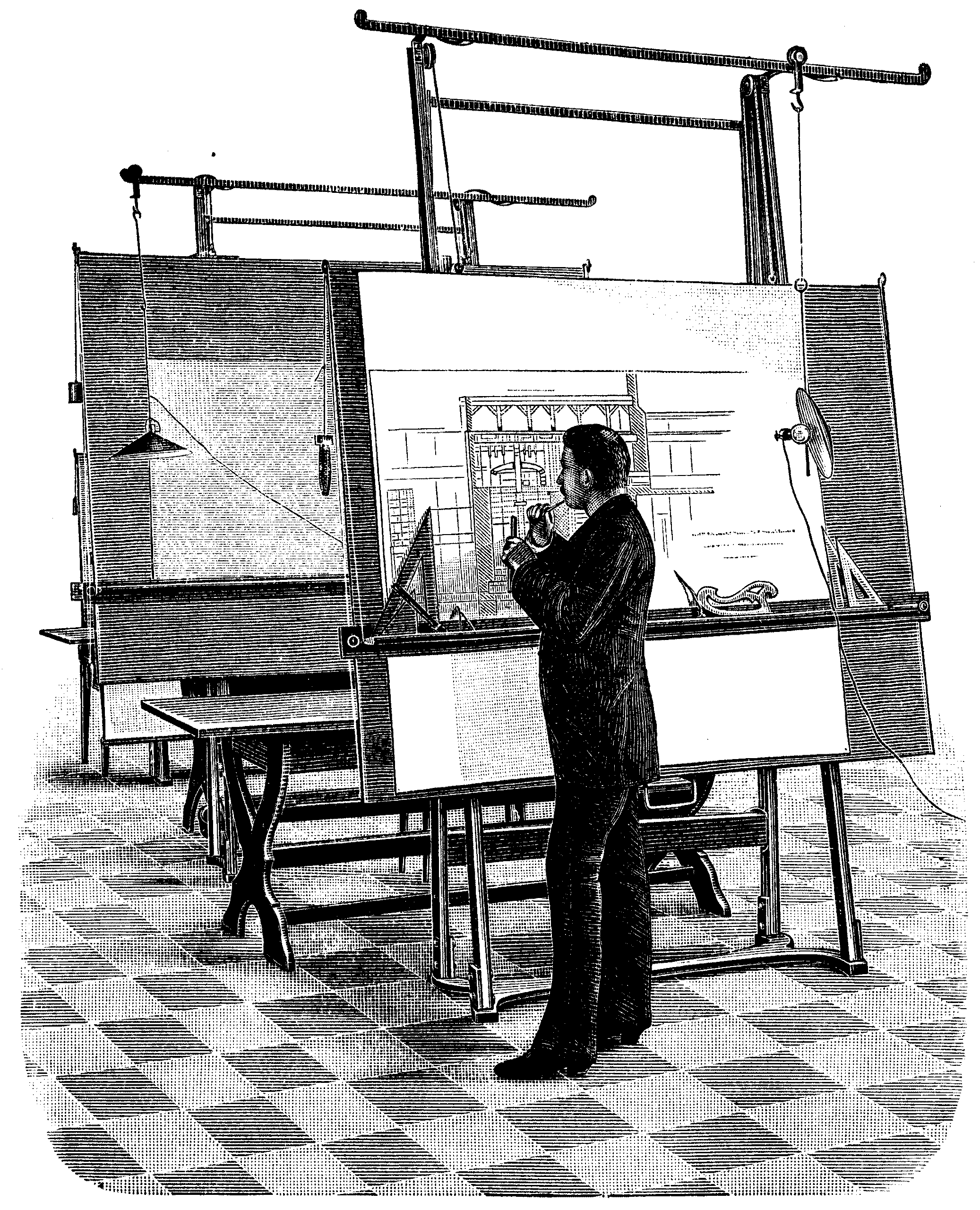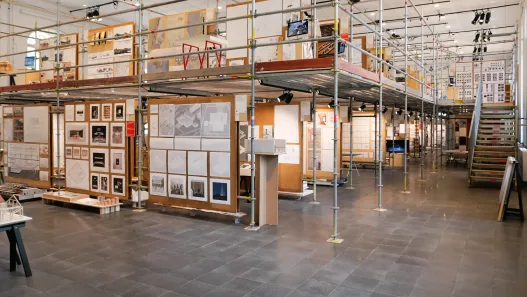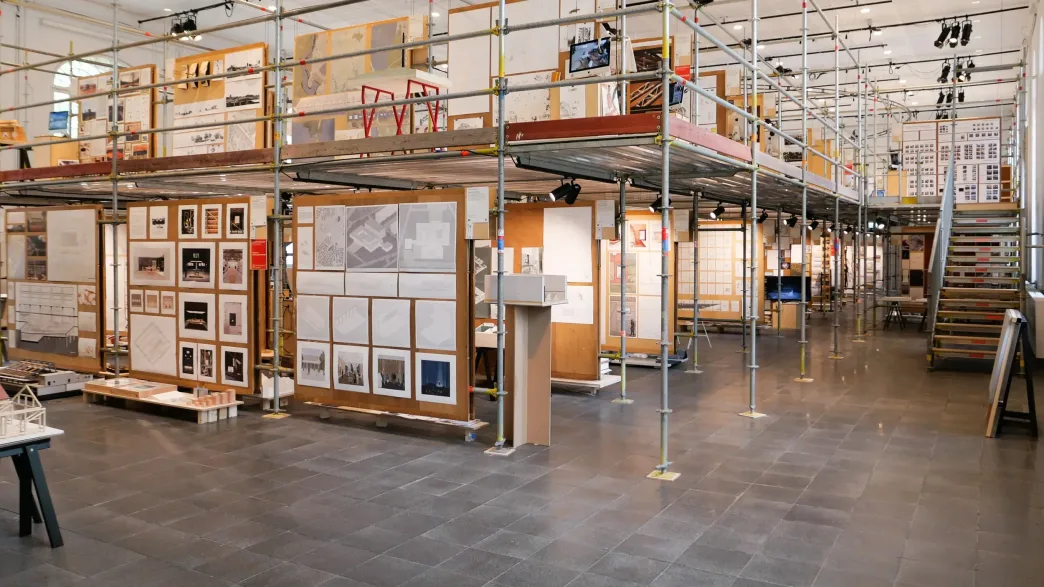Entering the field of architecture is often seen as a dream come true for many graduates. However, the realities of the profession can be quite different. Today’s architectural environment is a dynamic mix of creativity, technology and economic challenges that newly graduated architects must overcome. As they step into this competitive world, understanding the complexities of the industry is crucial to their success and fulfilment.

Evolution of Architecture
Architecture has always reflected the values and technologies of its time. From the majestic cathedrals of the Middle Ages to the sleek skyscrapers of the modern era, each architectural style tells a story of social progress and innovation. Over the decades, architecture has evolved not only in style but also in purpose. Today, architects are tasked with creating sustainable, functional and aesthetically pleasing spaces. The shift towards sustainability has brought green architecture to the forefront, encouraging new graduates to adopt eco-friendly design principles. This evolution requires a new perspective and adaptability, as these young professionals must push boundaries while respecting historical influences.
Current Trends in the Industry
The architecture sector is characterised by various trends that shape the way buildings are designed and constructed. Today there is a strong focus on sustainability, with many firms prioritising energy-efficient designs and using materials that minimise environmental impact. In addition, urbanisation is pushing architects to develop innovative solutions for densely populated areas, emphasising vertical construction and multifunctional spaces. The increase in remote working due to the pandemic has also impacted design, increasing the need for adaptable spaces that cater to both residential and professional environments. These trends create a vibrant but challenging backdrop for new graduates who need to be knowledgeable and versatile to meet changing client needs.
The Role of Technology in Architecture
Technology plays a crucial role in contemporary architecture, revolutionising the design and construction processes. Tools such as Building Information Modelling (BIM) allow architects to create detailed digital models, providing clarity and precision in their designs. Virtual reality (VR) and augmented reality (AR) have emerged as invaluable resources for visualising projects, allowing clients to experience spaces before they are built. But while these developments offer exciting opportunities, they also pose challenges for new architects. The need for competence in various software and technologies can be daunting, and keeping up to date with the latest innovations requires continuous learning and adaptation.
Impact of Economic Factors
Economic conditions significantly affect the architectural sector. During periods of economic growth, there is often an increase in construction projects, providing ample opportunities for newly graduated architects. Conversely, economic downturns can lead to reduced budgets and fewer projects, creating a highly competitive job market. Understanding market trends, client priorities and budget constraints is crucial for new architects trying to build their careers. In addition, they need to learn to manage the financial aspects of projects, from cost estimation to contract negotiations, skills that are not usually emphasised in academic settings.
Globalisation and its effects
In our interconnected world, globalisation has transformed the architectural profession. Today, architects often work on international projects and collaborate with different teams across borders. This not only broadens their perspectives, but also forces them to understand various cultural contexts and design preferences. However, globalisation also means increased competition as firms can recruit talent from all over the world. New graduate architects must develop a unique personal brand and a strong portfolio to stand out in a crowded field. Emphasising skills such as cultural sensitivity and adaptability can help them succeed in this global market.
In conclusion, while the journey for newly graduated architects is full of challenges, it is also full of opportunities for those who are willing to embrace change and innovation. By understanding the complexity of the architectural landscape, they can build successful and fulfilling careers in a field that continues to evolve.
Entering the world of architecture as a newly graduated professional can be both exciting and daunting. Many young architects with dreams of creating innovative spaces and contributing to the built environment quickly realise that the journey is fraught with challenges. In today’s competitive marketplace, understanding these struggles is crucial in the transition from academia to the professional environment.
Challenges for New Graduates
When new architects enter the industry, they face a variety of obstacles that can shape their careers. These challenges test not only their skills, but also their flexibility and adaptability. Understanding these obstacles is crucial for aspiring architects aiming to make their mark in a challenging field.
High Competition for Positions
One of the most important challenges for new graduates is the intense competition for available positions. The field of architecture attracts a large number of talented individuals, all competing for the same roles. This saturation means that even the most talented graduates can struggle to secure their first job. Firms often prioritise experienced candidates, leaving new graduates feeling overlooked. As a result, many young architects may have to apply for numerous positions and often face rejection before finally finding a role. This competitive environment can be discouraging, but it also pushes new architects to develop their portfolio and networking skills, forcing them to stand out in a crowded field.
Lack of Practical Experience
While academic programmes equip students with theoretical knowledge and design skills, they often fall short of providing hands-on experience. Newly graduated architects often find themselves on a steep learning curve when they join the workforce. In many cases, their education may not fully prepare them for the practical demands of architectural practice, such as navigating building codes, working with contractors, or managing client expectations. This gap can lead to feelings of inadequacy and stress as they grapple with real-world challenges not fully addressed in school. To bridge this gap, many graduates seek internships or entry-level positions that allow them to gain the practical experience necessary to succeed.
Student Debt and Financial Burdens
The financial implications of an architectural education can be daunting. Many graduates face significant amounts of student debt that can cloud their choices early in their careers. This financial pressure often requires accepting lower-paying positions or working in unrelated fields to make ends meet. Balancing the desire to do meaningful work in architecture with the need for financial stability can be a difficult task. New architects have to navigate this precarious balance when starting their careers, which often leads to stress and uncertainty about their long-term financial future.
Expectations and Reality
The transition from student to professional often presents a sharp contrast between expectations and reality. Many recent graduates imagine themselves working on exciting projects, collaborating with creative teams and directly influencing the urban landscape. In reality, however, tedious tasks such as drafting and paperwork may be involved, which may not match their expectations. This inconsistency can lead to frustration and may prompt some to reconsider their career path or look for niches within the profession that better match their interests. Embracing flexibility and keeping an open mind can help new architects overcome these challenges and find fulfilment in their role.
Adapting to Workplace Culture
Every workplace has its own unique culture and adapting to this environment can be a significant challenge for new graduates. Architecture firms often have established workflows, hierarchies and communication styles that can be unfamiliar to new entrants. Understanding team dynamics, navigating office politics and learning to collaborate effectively are crucial skills that take time to develop. New architects may feel overwhelmed by the need to integrate into a pre-existing culture while proving their worth. Building relationships with colleagues and seeking mentorship can ease this transition and create a supportive network that fosters both professional development and personal well-being.
In conclusion, newly graduated architects face a complex environment full of challenges that test their determination and creativity. By understanding these challenges, they can better prepare themselves for the modern architecture industry, transforming obstacles into opportunities for growth and innovation. With determination and adaptability, young architects can chart a successful path and make a meaningful contribution to the built environment.
Entering the field of architecture as a new graduate can be both exciting and daunting. While the academic journey equips aspiring architects with essential skills and knowledge, the transition into the professional world often presents a number of challenges. From navigating complex labour markets to establishing a foothold in the industry, newly graduated architects face numerous obstacles. One of the most important factors influencing their success is the ability to build a solid network of professional relationships.
The Importance of Networking
Networking plays a crucial role in the architecture sector and acts as a bridge between education and employment. For new graduates, the connections they make can open the door to job opportunities, collaborations and valuable insights into industry trends. Understanding the importance of networking is crucial for any new architect looking to establish themselves in a competitive environment.
Building Professional Relationships
The foundation of effective networking is building professional relationships. For newly graduated architects, this means reaching out to colleagues, professors and professionals in the field. Engaging in conversation, sharing experiences and attending local architecture meet-ups can create a sense of community. These relationships often lead to referrals and recommendations that can be influential in job applications. Real-world examples abound where a simple coffee chat with an experienced architect has led to internship opportunities and even full-time positions. The key is to approach networking as a mutually beneficial endeavour; by offering insight or assistance to others, recent graduates can promote goodwill and establish themselves as valuable contributors to the professional community.
Utilising Social Media Platforms
In today’s digital age, social media has become an invaluable tool for networking. Platforms such as LinkedIn, Instagram and Twitter allow architects to showcase their work, share ideas and connect with industry leaders. For recent graduates, maintaining an active presence on these platforms can significantly increase visibility. Sharing projects, insights and even architectural criticism can attract the attention of potential employers. For example, a recent graduate could post a design project on Instagram using relevant hashtags to reach a wider audience. This can earn them recognition and even job offers from companies impressed by their creativity and initiative.
Participate in Industry Events
Industry events such as conferences, workshops and exhibitions provide fertile ground for networking. These meetings not only enable new architects to learn about the latest trends and technologies, but also provide an opportunity to meet influential figures in the field. Participating in panel discussions or workshops can develop new graduates’ skills while also expanding their networks. For example, attending a regional architecture fair can lead to personal interactions with representatives from leading firms, potentially resulting in job opportunities. The energy and inspiration found at these events can also revitalise a young architect’s passion for their work.
Finding a Mentor
A mentor can be one of the most valuable assets for a newly graduated architect. Experienced professionals can provide guidance, feedback and insights not easily found in academic settings. Building a mentor-mentee relationship often starts through networking – attending events, interacting on social media, or simply reaching out to someone whose work inspires you. Many successful architects attribute their career development to the support and advice they received from mentors. This relationship can help you navigate the complexities of the industry, offering advice on everything from design philosophies to job application strategies.
Join Professional Organisations
Joining professional organisations such as the American Institute of Architects (AIA) can be of great benefit to newly graduated architects. These organisations offer resources, continuing education and networking opportunities specifically geared towards the architectural profession. Membership often comes with access to special events, workshops and forums where young architects can connect with established professionals. Furthermore, these organisations often provide job boards and career resources, becoming a valuable ally in the job search process.
In summary, although newly graduated architects face challenges in the modern industry, the importance of networking cannot be overstated. By building professional relationships, using social media, attending industry events, seeking mentorship and joining professional organisations, they can increase their prospects and chart a successful career path. The architectural journey is as much about connections as it is about creativity, and embracing networking can lead to a fulfilling professional life.
Entering the field of architecture as a new graduate can feel overwhelming. Influenced by rapid technological developments, changing client expectations and the need for sustainable design, the landscape of the architecture industry is constantly evolving. New architects often find themselves in a complex environment where the challenges are as varied as the projects they undertake. To be successful, they must focus on skills development, embrace continuous learning and adapt to the demands of modern practice.
Skill Development and Continuous Learning
For newly graduated architects, the skills development journey is not just a phase but an ongoing commitment. The architectural profession is a diverse and multifaceted profession that requires a mix of both hard and soft skills. A strong foundation in design principles and technical knowledge is essential, but it is equally important to develop interpersonal skills, creativity and critical thinking.
As the industry evolves, architects are expected to be well-rounded problem solvers. This means being open to learning new techniques, exploring different design philosophies and understanding a variety of building materials. The ability to adapt and innovate is essential in a field where trends change rapidly and client needs can be unpredictable.
Key Skills for Modern Architects
The modern architect must master a variety of basic skills to be successful. Technical skills include proficiency in architectural design software, understanding of building codes, and knowledge of structural engineering principles. However, architectural design is not only about technique; it also involves creativity and an artistic vision to create spaces that resonate with users and enhance their experience.
In addition to technical skill, architects need to develop strong analytical skills to assess the viability and sustainability of the project. This includes considering not only aesthetics, but also functionality, environmental impact and long-term usability. As architects often work in teams and need to present their concepts to clients and stakeholders, the ability to clearly communicate ideas both visually and verbally is equally important.
The Importance of Software Proficiency
In today’s digital age, software proficiency is an indisputable aspect of an architect’s skill set. Programmes such as AutoCAD, Revit and SketchUp are integral to the design process and allow architects to create detailed plans and 3D models. Familiarisation with these tools can significantly increase productivity and accuracy in architectural work.
Moreover, new technologies such as Building Information Modelling (BIM) have transformed the way architects collaborate and manage projects. BIM allows for a more integrated approach where all stakeholders can access and contribute to a single model. This not only streamlines the design process but also minimises errors and miscommunications. Developing software skills for recent graduates is not only useful but also essential for securing employment in a competitive labour market.
Attending Workshops and Seminars
One of the best ways for newly graduated architects to develop their knowledge and skills is through workshops and seminars. These events provide opportunities to learn from industry experts, gain insight into new trends and network with other professionals. Attending hands-on workshops can help bridge the gap between academic knowledge and practical application, allowing graduates to experiment with techniques and tools they may not have encountered during their studies.
In addition, seminars often cover current topics such as sustainable design practices, technological innovations and legislative changes. By interacting with the architectural community through these events, new architects can retain the knowledge and inspiration that is crucial to their professional development.
Staying Up-to-Date with Industry Standards
The field of architecture is governed by a multitude of standards and regulations that can vary by location and project type. For new architects, understanding these standards is vital as they directly influence design decisions and project execution. Constantly learning about building codes, environmental regulations and industry best practices is essential to ensure compliance and quality in their work.
Staying current includes not only reading relevant literature, but also following industry leaders and organisations that publish guidelines and updates. Many architects find it valuable to join professional associations that offer resources, education and advocacy for their members. Being part of such networks enhances a graduate’s credibility and keeps him/her abreast of the latest developments in the field of architecture.
Emphasising Soft Skills
Whilst technical abilities are crucial, it is often soft skills that set successful architects apart from others. Effective communication, teamwork and problem solving are crucial in an industry that relies heavily on collaboration. Architects often work alongside clients, engineers and contractors, which requires them to clearly articulate their ideas and negotiate effectively.
Moreover, emotional intelligence plays an important role in understanding client needs and developing positive relationships. Recent graduate architects who invest in developing their soft skills will find themselves better equipped to navigate the complexity of projects and client interactions, leading to successful outcomes and a fulfilling career.
In conclusion, the journey of newly graduated architects is full of challenges, but it is also rich in opportunities for growth and innovation. By focusing on skill development, embracing continuous learning and developing both technical and soft skills, they can navigate their way through the modern architectural landscape and make a meaningful impact in their field.
Entering the field of architecture as a newly graduated professional can be both exciting and daunting. The transition from academia to the professional world often comes with a steep learning curve. Newly graduated architects face numerous challenges, notably maintaining work-life balance and addressing mental health concerns. As they navigate their new roles, it is crucial to understand these struggles and explore ways to manage them effectively.
Work-Life Balance and Mental Health
The modern architectural industry is renowned for its demanding nature. Long working hours, tight deadlines and high expectations can lead to considerable stress. Newly graduated architects often find themselves involved in projects that require intense focus and creativity, which can overshadow their personal life and well-being. This imbalance can lead to feelings of overwhelm and anxiety, contributing to a cycle of burnout that many find difficult to escape.
Achieving a healthy work-life balance is not only essential for mental health, but also for fostering creativity and productivity in the workplace. When architects are overworked, their ability to think innovatively is diminished, which is counterproductive in a field that thrives on fresh ideas and perspectives. Understanding the importance of this balance is the first step to creating a sustainable career in architecture.
Understanding Burnout in Architecture
Burnout is a state of emotional, physical and mental exhaustion caused by prolonged stress. In architecture, this can manifest as a lack of motivation, a feeling of helplessness and a decreased sense of personal accomplishment. In their eagerness to prove themselves, newly graduated architects may push their limits and compromise their well-being in the process. The pressure to deliver high-quality designs under tight deadlines can lead to a toxic working environment where the joy of creativity is overshadowed by stress.
It is very important to recognise the signs of burnout. Symptoms can include chronic fatigue, irritability and a sense of detachment from work. Understanding that burnout is not just an individual problem, but a systemic problem within the industry, can help new architects advocate for healthier workplace practices. Awareness is the first step towards change, both personally and within the architectural community.
Strategies for Managing Stress
To combat stress, newly graduated architects can adopt a variety of strategies that promote resilience and well-being. Time management is key; learning to prioritise tasks can reduce feelings of overwhelm. Techniques such as breaking projects into smaller, manageable chunks and setting realistic deadlines can help relieve pressure.
Mindfulness practices such as meditation or yoga can also be beneficial. These practices can reduce anxiety and increase overall mental clarity by encouraging individuals to focus on the present moment. Engaging in regular physical activity is another effective way to combat stress. Exercise releases endorphins, which can improve mood and provide a much-needed break from the demands of work.
Also, building a supportive network of colleagues and mentors can be invaluable. Sharing experiences and seeking advice from others who have overcome similar challenges can give new graduates the encouragement and guidance they need.
Setting Boundaries at Work
One of the most important challenges for newly graduated architects is learning to set boundaries. In a profession that often glorifies overwork, it can be difficult for young professionals to assert their personal time needs. However, setting clear boundaries is crucial to maintaining mental health and ensuring long-term success.
Establishing a routine that includes dedicated working hours and personal time can help architects avoid work-related stress. Communicating these boundaries to employers and colleagues is equally important. By encouraging an open dialogue about workload and expectations, new architects can develop a more supportive work environment that respects personal time.
The Role of Hobbies and Interests
Engaging in hobbies and interests outside of work can play an important role in reducing stress and boosting creativity. Pursuing passions such as painting, photography or gardening not only provides a creative outlet, but also allows architects to recharge and gain new perspectives. These activities can act as a form of therapy, helping to relieve the pressures of daily work life.
Moreover, hobbies can enhance skills related to architecture. For example, photography can improve an architect’s eye for composition and detail, while travelling can inspire new design ideas. Newly graduated architects can develop a more balanced and fulfilling lifestyle by integrating their personal interests into their lives.
Seeking Professional Help
When stress and burnout become overwhelming, seeking professional help is a vital step. Mental health professionals can provide valuable support and strategies tailored to individual needs. Therapy can offer a safe space to explore feelings of anxiety or inadequacy and develop coping mechanisms.
Particularly in the creative industries, the stigma associated with seeking help is decreasing. Many successful architects advocate for mental health awareness and emphasise that seeking support is a sign of strength, not weakness. Newly graduated architects should feel empowered to prioritise their mental health and ask for help when needed.
In conclusion, the journey of a newly graduated architect is full of challenges, especially in terms of work-life balance and mental health. By understanding the origins of burnout, implementing effective stress management strategies, setting healthy boundaries, nurturing personal interests, and seeking professional support, these young professionals can navigate the complexities of the architectural world while maintaining their well-being. Embracing this journey with awareness and intention can ensure not only a successful career, but also a fulfilling life.
Entering the world of architecture as a newly graduated architect can feel like stepping into a complex labyrinth. This labyrinth is full of challenges, uncertainties and sometimes overwhelming expectations. Known for its creativity and innovation, the architecture sector also requires a high level of technical skills, business acumen and the ability to adapt to ever-evolving trends. This article examines the multifaceted challenges faced by recent graduates and offers insights into pathways to success.
Success Stories and Pathways Forward
Despite the obstacles, many newly graduated architects have charted successful career paths. Their journey often begins with internships or entry-level positions at established firms. These early experiences are crucial as they provide valuable exposure to real-world projects and help build a professional network. For example, some architects have transitioned from assisting on large-scale commercial projects to leading their own design initiatives, demonstrating that determination and continuous learning can yield fruitful results.
Beyond traditional pathways, the rise of technology and remote working has opened new doors for innovative endeavours. Graduates are exploring freelancing opportunities, launching new ventures, and even using social media to showcase their work. These pathways allow for creative freedom and the chance to interact with different clients, redefining what success in architecture looks like.
Profiles of Successful Architects
When the journeys of successful architects are analysed, a tapestry of different backgrounds and experiences emerges. For example, consider the story of a young architect who, after graduating, took a risk and moved to a different country for an internship. This experience not only honed his design skills, but also exposed him to international architectural styles and practices. Similarly, another architect used his passion for sustainable design to create innovative buildings that prioritised environmental responsibility, eventually gaining recognition in major architectural publications.
These profiles emphasise that success in architecture is defined not only by prestige, but also by the impact one can make in society and the environment. Each architect’s unique journey shows that there are multiple paths to building a fulfilling career, often driven by personal passion and resilience.
Innovative Projects of Recent Graduates
Recent graduates are increasingly making their mark with innovative projects that push the boundaries of traditional architecture. One notable example is a group of recent graduates collaborating on a community-oriented project aimed at revitalising neglected urban areas. They designed modular, eco-friendly installations that not only beautify the area but also provide functional spaces for local events and gatherings.
Another inspiring project involved a graduate integrating smart technology into affordable housing design, ensuring that sustainability and efficiency are accessible to all. These projects demonstrate how new perspectives and cutting-edge ideas can lead to transformative results and prove that recent graduates can indeed make significant contributions to the architectural landscape.
Lessons Learnt from Challenges
The journey of a newly graduated architect is often full of challenges that serve as valuable learning experiences. From overcoming complex client expectations to managing tight deadlines, these obstacles teach flexibility and problem-solving skills. Many alumni have shared stories of initial setbacks, such as a design that did not meet client approval or a project that exceeded budget constraints. However, these setbacks often become stepping stones for growth.
Through reflection and adaptation, architects learn to communicate effectively, defend their design vision and collaborate with diverse teams. Each challenge reinforces the importance of perseverance and flexibility, key attributes in a constantly evolving industry.
The Future of Architecture Careers
The future of architectural careers holds potential with technological advances and a greater emphasis on sustainability. As society increasingly prioritises environmentally friendly practices, architects who embrace green building techniques and innovative materials will be at the forefront of the industry. Furthermore, the integration of artificial intelligence and virtual reality into design processes is reshaping the way architects visualise and present their work.
Moreover, the rise of remote working has expanded business opportunities, allowing architects to collaborate across borders and enter a global market. This trend enriches the field of architecture as a whole by encouraging more diverse ideas and approaches.
Promoting Flexibility and Adaptability
Resilience and adaptability are crucial traits for newly graduated architects as they navigate the modern industry. Faced with a rapidly changing landscape, it is crucial to develop a mindset that embraces change and seeks continuous improvement. Networking, mentoring and professional development opportunities can provide the support needed to succeed.
Encouragement from experienced professionals can also foster a sense of community and belonging, reminding new architects that they are not alone in their struggles. By sharing experiences and insights, the architectural community can inspire the next generation of architects to remain resilient, innovate boldly and contribute meaningfully to the built environment.
In conclusion, the road ahead for newly graduated architects is challenging, but also full of opportunities for growth, creativity and impact. Through perseverance and a willingness to learn, they can navigate the complexities of the industry and emerge as influential figures in the world of architecture.






















